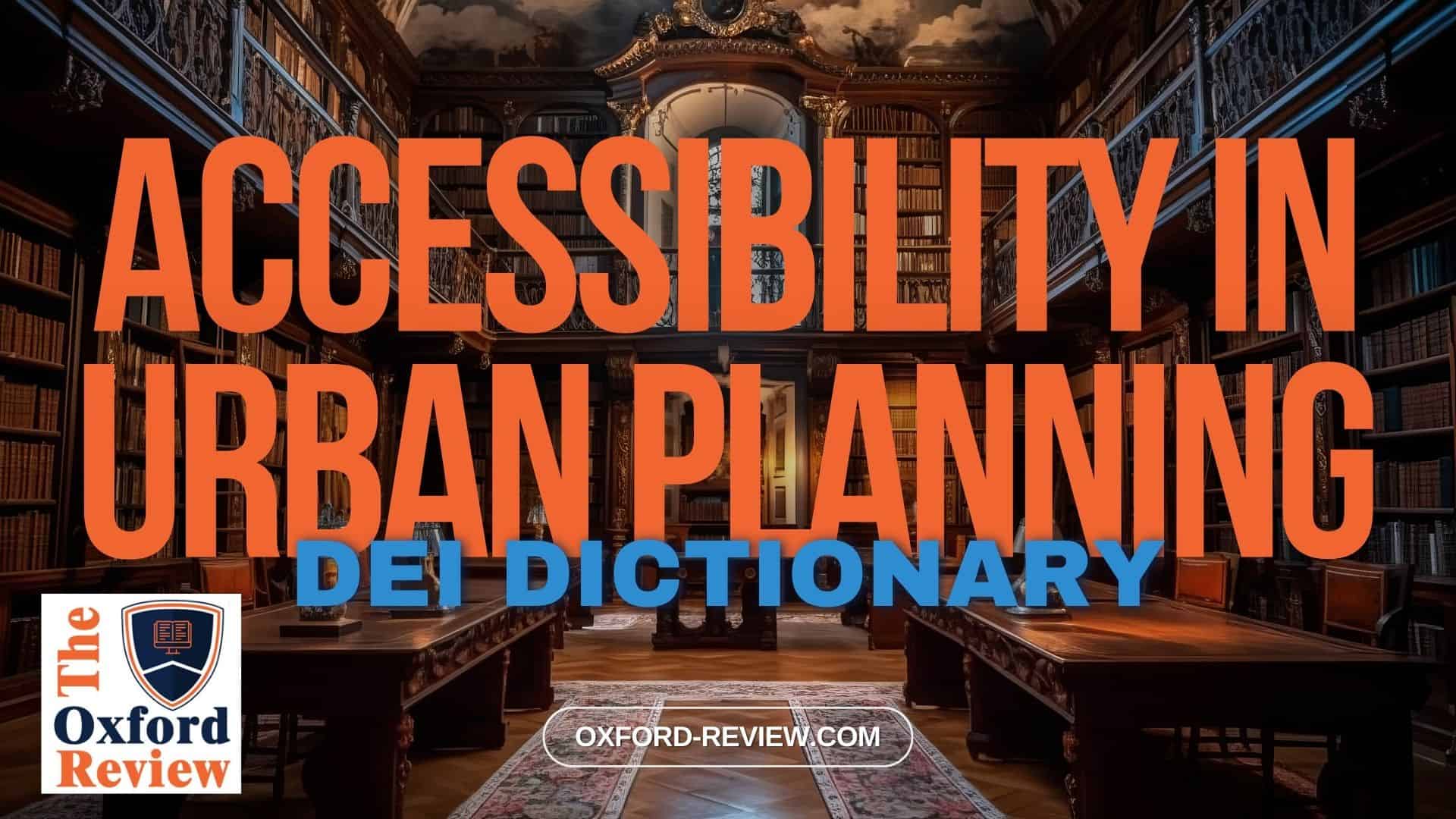Accessibility in Urban Planning – Definition and Explanation

Unlocking Urban Potential: Understanding Accessibility in Urban Planning
Accessibility in urban planning is a pivotal concept that aims to create inclusive and equitable environments within cities. It focuses on ensuring that all individuals, regardless of their abilities, socioeconomic status, or other demographic factors, can easily navigate and access essential services, amenities, and opportunities within urban areas.
Definition:
Accessibility in urban planning refers to the design and implementation of infrastructure, transportation systems, and public spaces to accommodate the needs of all individuals, including those with disabilities, the elderly, and those from diverse socioeconomic backgrounds. It involves considering factors such as mobility, affordability, and proximity to essential services to ensure that no one is excluded from participating fully in urban life.
Key Components:
- Transportation: Accessible transportation is fundamental to urban accessibility. This includes designing public transit systems with features such as ramps, lifts, and designated spaces for wheelchairs. Additionally, creating pedestrian-friendly pathways and cycle lanes enhances mobility for all residents.
- Infrastructure: Infrastructure plays a crucial role in ensuring accessibility within urban areas. This encompasses the construction of accessible buildings, parks, and recreational areas that comply with universal design principles. Moreover, installing amenities such as tactile paving, audible signals at pedestrian crossings, and Braille signage improves navigation for individuals with disabilities.
- Affordability: Economic accessibility is essential for fostering inclusivity in urban planning. This involves providing affordable housing options, healthcare facilities, and educational resources within close proximity to residential areas. Ensuring equitable access to affordable services enables individuals from diverse socioeconomic backgrounds to thrive within cities.
Example:
Consider the transformation of a bustling urban neighbourhood into a more accessible space through targeted urban planning initiatives. In this example, a city identifies an area with limited accessibility due to inadequate infrastructure and transportation options. Through collaborative efforts between city officials, urban planners, and community stakeholders, several changes are implemented:
- Transportation: The city invests in upgrading public transit systems by introducing low-floor buses equipped with ramps and priority seating for individuals with disabilities. Additionally, bike-sharing programmes are launched to encourage alternative modes of transportation.
- Infrastructure: Sidewalks and pedestrian pathways are widened and equipped with dropped kerbs and tactile paving to enhance accessibility for individuals with mobility impairments. Public spaces such as parks and recreational areas are redesigned to include accessible amenities and designated areas for wheelchair users.
- Affordability: The city implements zoning regulations to promote mixed-income housing developments within the neighbourhood. Affordable housing units are integrated into new residential developments, ensuring that individuals from diverse socioeconomic backgrounds can afford to live in the area.
As a result of these initiatives, the once inaccessible urban neighbourhood becomes a vibrant and inclusive community where all residents can comfortably live, work, and play.
Conclusion:
Accessibility in urban planning is not merely a concept but a fundamental principle that underpins the creation of inclusive and equitable cities. By prioritising accessibility in the design and development of urban spaces, cities can break down barriers, foster social cohesion, and unlock the full potential of their diverse populations.
References:
Solá, A. G., Vilhelmson, B., & Larsson, A. (2018). Understanding sustainable accessibility in urban planning: Themes of consensus, themes of tension. Journal of Transport Geography, 70, 1-10. https://www.sciencedirect.com/science/article/abs/pii/S0966692317300303
Liu, S., & Zhu, X. (2004). Accessibility analyst: an integrated GIS tool for accessibility analysis in urban transportation planning. Environment and Planning B: Planning and Design, 31(1), 105-124. https://journals.sagepub.com/doi/abs/10.1068/b305
Be impressively well informed

Get the very latest research intelligence briefings, video research briefings, infographics and more sent direct to you as they are published
Be the most impressively well-informed and up-to-date person around...
